Conductivity meter calibration
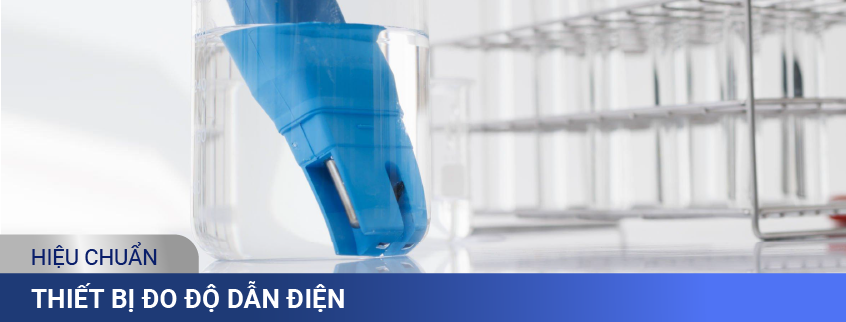
Contents
- The concept of conductivity
- What is a Conductivity meter?
- Types of Conductivity meters
- Principle of Operation
- Conductivity Meters in Various Industries
- Why Should the Conductivity Meters be calibrated?
- Conductivity meter - Calibration procedure
Conductivity is a vital indicator in measuring water quality, it is also a reference for many related criteria. the parameter of conductivity greatly affects the output product quality of industrial lines.
Conductivity is indeed the ability of a substance to carry an electric current. It’s dependent on the presence of charged particles, or ions, which can carry either a negative (-) or positive (+) charge.
This article only refers to conductivity in solutions. So what is conductivity in a solution?"
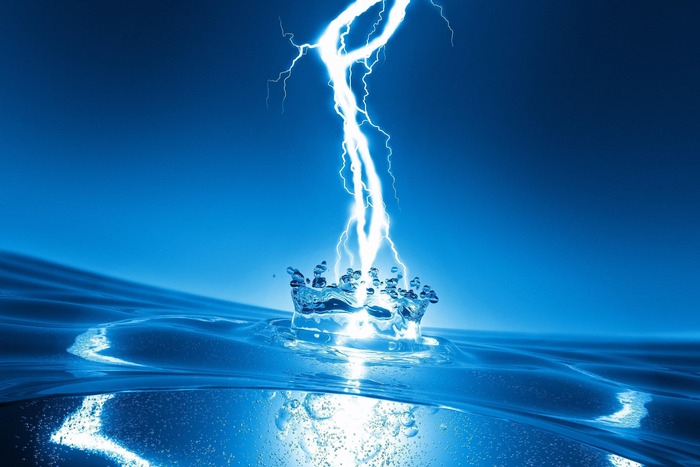
The electrical conductivity (EC) of a solution is an index that represents the total concentration of dissolved ions in the solution. The more ions a solution contains, the higher its conductivity. Conversely, the fewer ions the solution has, the lower its conductivity. The unit of electrical conductivity is Siemens per centimeter (S/cm), and the units µS/cm and mS/cm are also commonly used.
The formula for electrical conductivity
The formula for electrical conductivity is the inverse of resistivity. So, if you know the resistivity of a material, you can calculate its conductivity using this formula:
σ=1/ρ
(In which: σ is electrical conductivity; ρ is resistivity)
This relationship shows that as resistivity increases, conductivity decreases and vice versa. It’s a fundamental concept in the study of electrical properties of materials.
The conductivity of a solution is indeed influenced by several factors, including temperature, the type of the substance, and the concentration of ions.
The conductivity of a solution is directly proportional to its temperature. As the temperature increases, the ions in the solution are supplied with additional energy, which causes them to move faster. This increased movement increases the conductivity of the solution. Conversely, as the temperature decreases, the ions move slower, and the conductivity of the solution decreases. When measuring conductivity, 25°C is often chosen as the reference temperature point
2. What is a Conductivity meter?
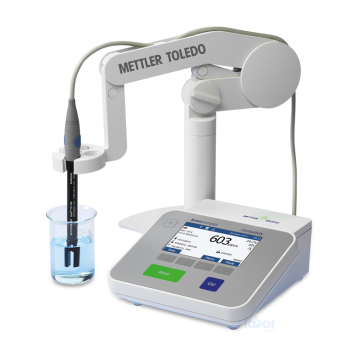 |
 |
A conductivity meter is a device that measures the ability of a solution to conduct an electric current. A conductivity meter works by applying a voltage between two electrodes immersed in a solution and measuring the resulting current.
Conductivity meters have various applications in research, engineering, and water quality monitoring. It is commonly used in various industries such as water quality testing, environmental monitoring, and chemical or pharmaceutical industries.
Conductivity meters come in various forms, each suited to different applications. Here are the main types:
- Benchtop Meters: These are usually larger and more precise, perfect for laboratory use.
- Portable or Handheld Meters: These are compact, rugged, and suitable for field use.
- Online or In-line Meters: These are installed in a process stream for real-time monitoring.
4. Principles of Operation
Electrodes: These are usually made of platinum or stainless steel. They are designed to create an electric field in the solution.
Thermometer: Since temperature can affect conductivity, most meters have a built-in thermometer to measure and correct the readings.
Display: This shows the conductivity reading, often in microsiemens per centimeter (µS/cm).
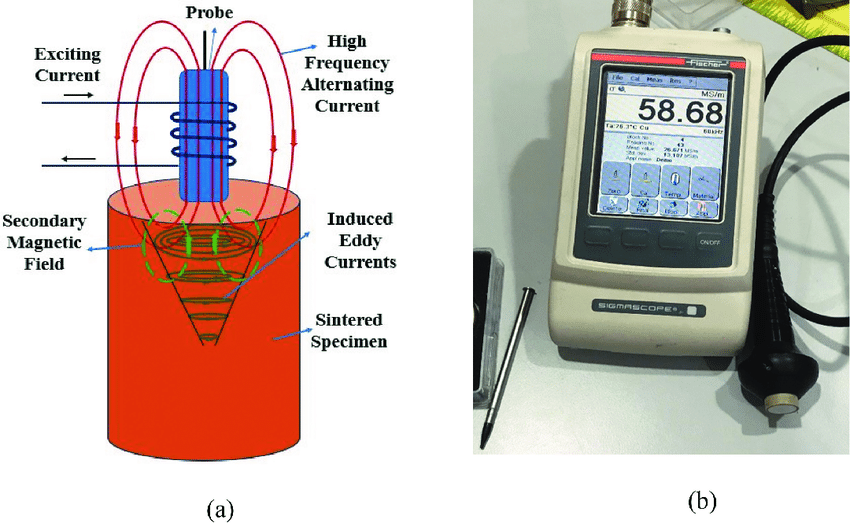
There are two main types of conductivity meters: contacting-type conductivity meters and inductive conductivity meters.
- Contacting-type conductivity meters (Electrodes in direct contact with the solution) : operate by measuring the ability of a solution to conduct an electric current.
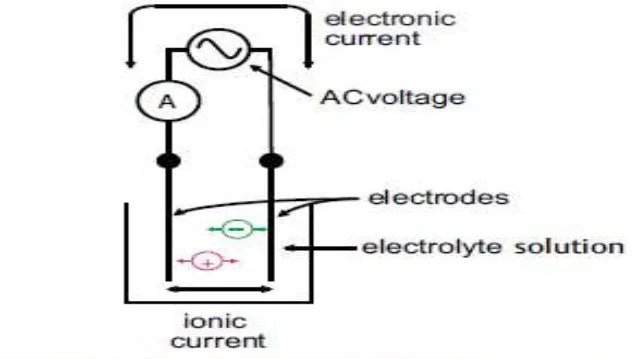
- The meter has a probe with two metal electrode plates, typically set 1 cm apart. These electrodes can be made of metal, usually stainless steel or titanium.
- When the probe is inserted into the solution, an alternating voltage is applied to the electrodes.
- The electric field created in the solution causes the ions to move back and forth.
- This movement of ions creates a current between the two electrodes.
- The meter reads this electrical current and provides a conductance value
- The meter is typically used to measure solutions with poor electrical conductivity and very few solid particles.
- Inductive conductivity meters (also known as electrodeless conductivity meters): operate using two electromagnetic coils placed inside a corrosion-resistant casing.
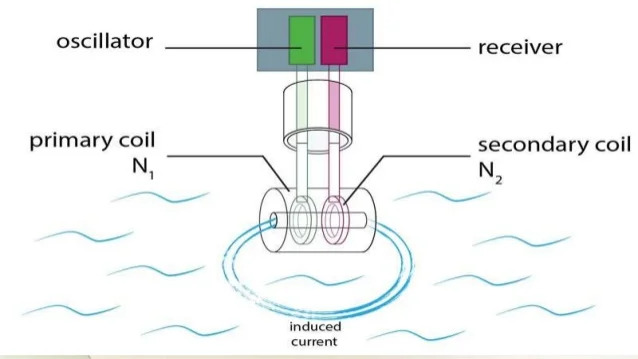
- When the device is submerged into the solution, an alternating voltage is applied to the drive coil.
- This induces a voltage in the solution.
- The voltage causes an ionic current to move, which is proportional to the conductance of the solution.
- The second coil, known as the receive coil, measures this ionic current. The more ions there are, the higher the conductivity.
- The meters do not provide a direct measurement of the number of ions in the sample. Instead, they infer the ion number by measuring the electrical charge within the solution.
- The meters are typically used to measure solutions with high conductivity, solutions that will corrode electrodes, or contain large amounts of solid particles.
5. Conductivity Meters in Various Industries
Conductivity meters are essential tools in various fields due to their ability to provide accurate measurements. Here are some of their applications:
- Medical Field: They ensure water used for preparation and cleaning meets strict criteria, including very low conductivity (usually less than 1µS/cm or 0.1µS/cm).
- Semiconductor Manufacturing: They help maintain high impedance levels in the water used during processing stages.
- Water Quality Assessment: They determine the level of impurities in domestic and industrial water sources.
- Corrosion Monitoring: They measure water quality in areas prone to corrosion, such as wastewater treatment facilities.
- Environmental Monitoring: They are crucial in checking and monitoring wastewater discharged from factories and industrial parks.
- Aquaculture and Agriculture: They measure water salinity and electrical conductivity, which are vital parameters for aquatic organisms and agriculture.
- Pharmaceutical, Beauty, and Food Industries: They evaluate water purity, ensuring the water used meets industry standards.
6. Why Should the Conductivity Meters be calibrated
Regular calibration of a conductivity meter is crucial for maintaining its accuracy and reliability, especially if the device has been in operation for a long time or used in harsh environments. The frequency of calibration can depend on several factors, including the specific usage of the device and the application in which it’s used.
7. Conductivity meter - Calibration procedure
This is a concise summary of the calibration process for a conductivity measuring device, referenced from the technical document ĐLVN 274:2014. Please note that the actual calibration procedure may vary slightly from the standard DLVN 274:2014 (internal calibration procedure).
- Conductivity standard solutions
- Conductivity meter
- Temperature bath
- Temperature measurement devices
- Environmental temperature and humidity measurement devices
- Distilled water
- Spray bottle
- Blotting paper
When performing calibration, it’s important to ensure the following conditions::
- Ambient temperature: (25 ± 5)oC
- Air humidity: ≤ 80%RH (no dew)
Before proceeding with the calibration, the following preparatory tasks must be performed:
- Select the calibration points corresponding to the conductivity standard solutions as follows:
| Measurement range | Conductivity standard solutions selected |
|
(0 ÷ 20) μS/cm |
Distilled water or Conductivity standard solution ≤ 2 μS/cm; 10 μS/cm |
| (0 ÷ 200) μS/cm | 10 μS/cm; 84 μS/cm; 147 μS/cm |
| (0 ÷ 2000) μS/cm | 147 μS/cm; 1000 μS/cm; 1413 μS/cm |
| (0 ÷ 20) mS/cm | 1.41 mS/cm; 8.00 mS/cm; 12.88 mS/cm |
| (0 ÷ 500) mS/cm | 1.41 mS/cm; 12.88 mS/cm; 111.3 mS/cm |
- Ensure that the conductivity standard solution is maintained at a stable temperature of (25 ± 0.01) °C using a temperature bath.
- Prior to calibration, clean the probe of the conductivity measuring device (UUT) with an appropriate solvent, as recommended in the manufacturer’s instructions in the technical documentation, depending on the material of the probe. After cleaning, rinse the probe with distilled water.
Technical checks must be carried out according to the following requirements: Check the normal operating status and adjustment mechanism of the UUT according to the technical documents provided.
The UUT is used to directly measure the conductivity of a standard solution. This measurement is then compared to the known value of that standard solution’s conductivity at a specific temperature (25 ± 0,01) °C.
- At each calibration point, the probe of the UUT must be rinsed at least 03 times and soaked for 10 minutes in the corresponding standard solution
- At each calibration point, measure at least 03 consecutive times with UTT. Record the measurement results in the calibration report.
- The error is calculated according to the formula:
- The error cannot be larger than the permissible error of UUT.
- Select a conductivity standard solution.
- Use the UUT to measure the concentration of the selected standard solution at least 5 consecutive times. Make sure to record the results in the calibration report.
- Repeatability is calculated by the standard deviation (s) according to the formula:
- The calculated standard deviation (s) must not be greater than one-third of the -permissible error of the UUT
- Select a conductivity standard solution.
- Use the UUT to measure the selected standard solution 3 times, each time spaced 2 hours apart. Record the results in the calibration report.
- The deviation between the measurement results compared to the first measurement should not be greater than the permissible error of the UUT
After calibration, the conductivity meter is labeled and issued a calibration certificate along with the calibration results.
Recommended calibration cycle: 01 year
To consult and request a quote for our conductivity meter calibration services, please kindly contact us via the following information:
LABORATORY: DONG TAM MEASUREMENT AND TECHNICAL TRADING SERVICE CO., LTD
ADDRESS: No.57-59 Street 11, Binh Hung Residential Area, Binh Hung Commune, Binh Chanh District, Ho Chi Minh City
TEL: 028 375 83 869 - Hotline: 0909 347 891 (Mr. Lâm)
Email: info@dongtam-mes.vn
Relative post | Xem tất cả
- Stopwatches calibration
- ORP meter calibration
- Hydrometer calibration
- Analytical and Technical balance calibration
- Analytical and Technical balance verification
- Spring dial scales verification
- Spring dial scales calibration
- Bench weight scale verification
- Bench weight scales calibration
- Platform scales verification
- Platform scales calibration
- Chlorine meter calibration



















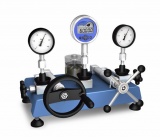
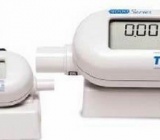
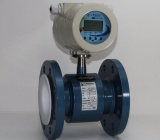



 Legal
Legal  Call: 0283.7583869
Call: 0283.7583869  Search for Certificate
Search for Certificate  Contact
Contact